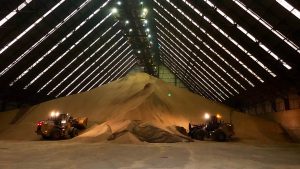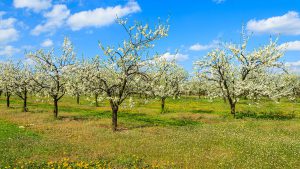Trade War Fund
FROM THE CEO'S DESK
ACCORDING TO THE analysts, futures, input costs, land prices, and market unpredictability are all lining up to create what could be a perfect storm for Ontario grain farmers; and unlike our neighbours to the south or the supply managed sector, we have an inadequate safety net.

U.S. farmers received $9 billion this past year because President Donald Trump knew that his trade policies would hurt them. Supply managed farmers here in Canada were promised compensation when political trade deals hurt their businesses. But what do grain farmers have in the face of the dispute with China and a trade war? Despite our best efforts, all we have is an eroded, dysfunctional Business Risk Management (BRM) suite with no fix in sight.
We can hope the resolution of the current global trade tension is swift so that we can stem the hurt that has already occurred. But, much like AgriStability — hope is not bankable nor is it predictable.
We all know that there is a cycle to the grain markets, and that costs can rise and prices can soften. However, farmers are facing a staggering increase in costs – nearly 20% when you calculate the price of inputs, steel tariffs, and the carbon tax.
This rate of inflation is higher than we have seen in the last four years combined. It’s no wonder we are hearing from farmers that they are having a hard time pencilling out a profit – especially coming off of a difficult year with low quality DON infected corn, issues with the survivability of wheat, and a pretty tough harvest all around in 2018.
I didn’t predict the Trump trade factor and all the political uncertainty that has gone along with it, but I did know this day of reckoning would come and that grain farmers would be left without the tools they need.
That is why Grain Farmers of Ontario has spent the past five years pushing government for a better BRM program. Some progress has been made with a Federal-Provincial-Territorial review in the past year, but we still do not have proper safety nets in place. We need programming that can adapt to the changing risks we face, whether that be fluctuating prices, weather extremes, or political whims that affect our trade relationships.
Farmers are resilient and often find their own ways to deal with an issue. But the truth of the matter is, farmers cannot take on all of the challenges facing the grain industry right now when their competitors are being supported or backstopped by their governments.
What we need is for the Canadian government to support grain farmers and the grain industry in the same way they have supported others in the agriculture sector affected by trade issues. That’s why Grain Farmers of Ontario is making the case for a Trade War Fund — a fund that will provide support for the non-supply managed sector during this turbulent time. It’s something we are asking for the current government to get working on and it’s a key election ask as we head toward the federal election this fall.
We didn’t want to find ourselves asking for funding but given the times and the storm that is brewing we must. Until the BRM suite is fixed, we need something to ensure that grain and oilseed farmers can sustain their operations.
Included in this magazine you will find a card that you can use when speaking to your local federal candidates. The card details our priorities for the next government of Canada to implement. I hope you find this useful as you attend summer events or talk at the door with candidates. Our chair, Markus Haerle, and the entire Board of Directors will be echoing your voice with party leaders to make sure these ideas are incorporated in their platforms. It’s important for those seeking office to understand the issues that are affecting your family’s livelihood and to understand how their actions in Ottawa can impact the future of our industry. •

























